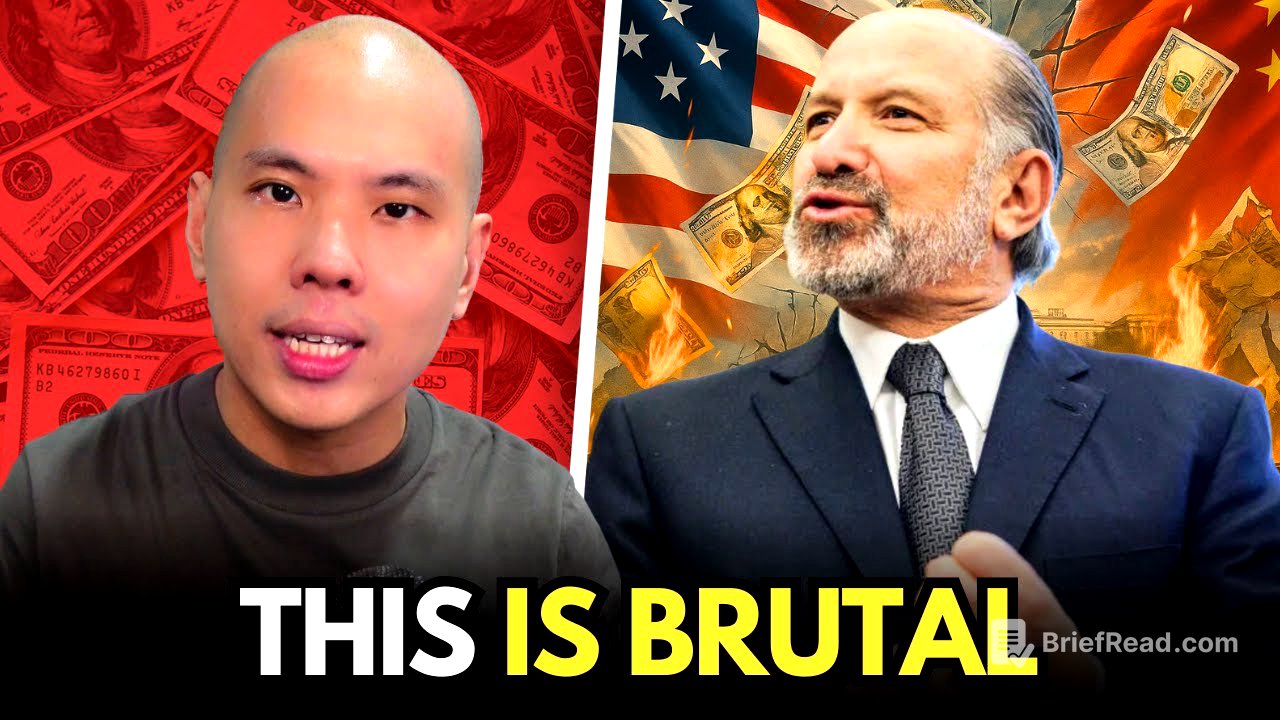TLDR;
This video discusses the potential economic impacts of proposed tariffs by Donald Trump on various countries, including US allies. It highlights the strategy behind these tariffs, which involves creating economic pressure to force countries into making concessions that benefit the US economy. The video also touches on the complexities of the US-China trade relationship and the potential for these trade policies to backfire, ultimately benefiting BRICS nations.
- Trump's tariff strategy is likened to that of a bully, making outrageous demands to force concessions.
- G7 nations are already subsidizing the US economy by purchasing Treasury bonds.
- The US-China trade deal is critical, but current programs show minimal reduction in the trade deficit.
- Complex schemes and penalties make trade with the US exhausting and unpredictable.
Trump's New Tariff Threats [0:00]
Donald Trump is proposing new tariffs, including a 20% tariff on Taiwan, a 39% tariff on Switzerland, and a 35% tariff on Canada, even higher than the tariffs on China. These actions are part of a broader strategy to pressure countries into subsidizing the US economy. The goal is to shock countries with high tariff threats, then negotiate deals where they give concessions to reduce these tariffs.
Impact on US Allies: Canada and Switzerland [2:44]
The proposed 35% tariff on Canada could significantly harm its economy, given that 78% of Canada's exports go to the US, contributing to a quarter of its GDP. This tariff could erode the margins of various Canadian industries. Switzerland, a major medicine exporter to the US, faces a 39% tariff, which could raise medicine prices for American consumers.
US Consumer Impact and G7 Subsidization [5:28]
Trump's tariffs are expected to negatively impact US consumer spending, which is already showing signs of weakness. Despite the G7 nations already subsidizing the US economy by buying Treasury bonds, Trump is pushing for more economic concessions. Countries like the UK, Canada, France, and Germany are increasing their holdings of US debt, effectively funding the trade war against themselves.
Trump's Trade Deficit Strategy [7:10]
Trump's tariff strategy is based on trade deficits: countries with a trade surplus with the US face higher tariffs. A small surplus means a 10% tariff, a modest deficit results in 15%, and a large deficit leads to tariffs as high as 39%. This approach may backfire, potentially leading countries to reduce trade with the US and instead trade more with BRICS nations.
The Rise of BRICS and the US-China Trade Deal [8:34]
As countries seek alternatives to trading with the US, BRICS nations, with their large populations and growing middle class, stand to benefit. The US-China trade deal is crucial for the US economy, but progress is slow, and the US is struggling to significantly reduce its trade deficit with China. Current trade programs are projected to decrease the US trade deficit with China by only a small amount, around 2-3%.
The Complexity of US Trade Policies [11:18]
The US is implementing complex trade policies, such as transshipment penalties, which add a 40% penalty on goods rerouted through other countries to bypass US tariffs. These convoluted schemes make trading with the US difficult and exhausting, requiring extensive knowledge of trade regulations. The unpredictability of these policies adds further uncertainty to international trade.









